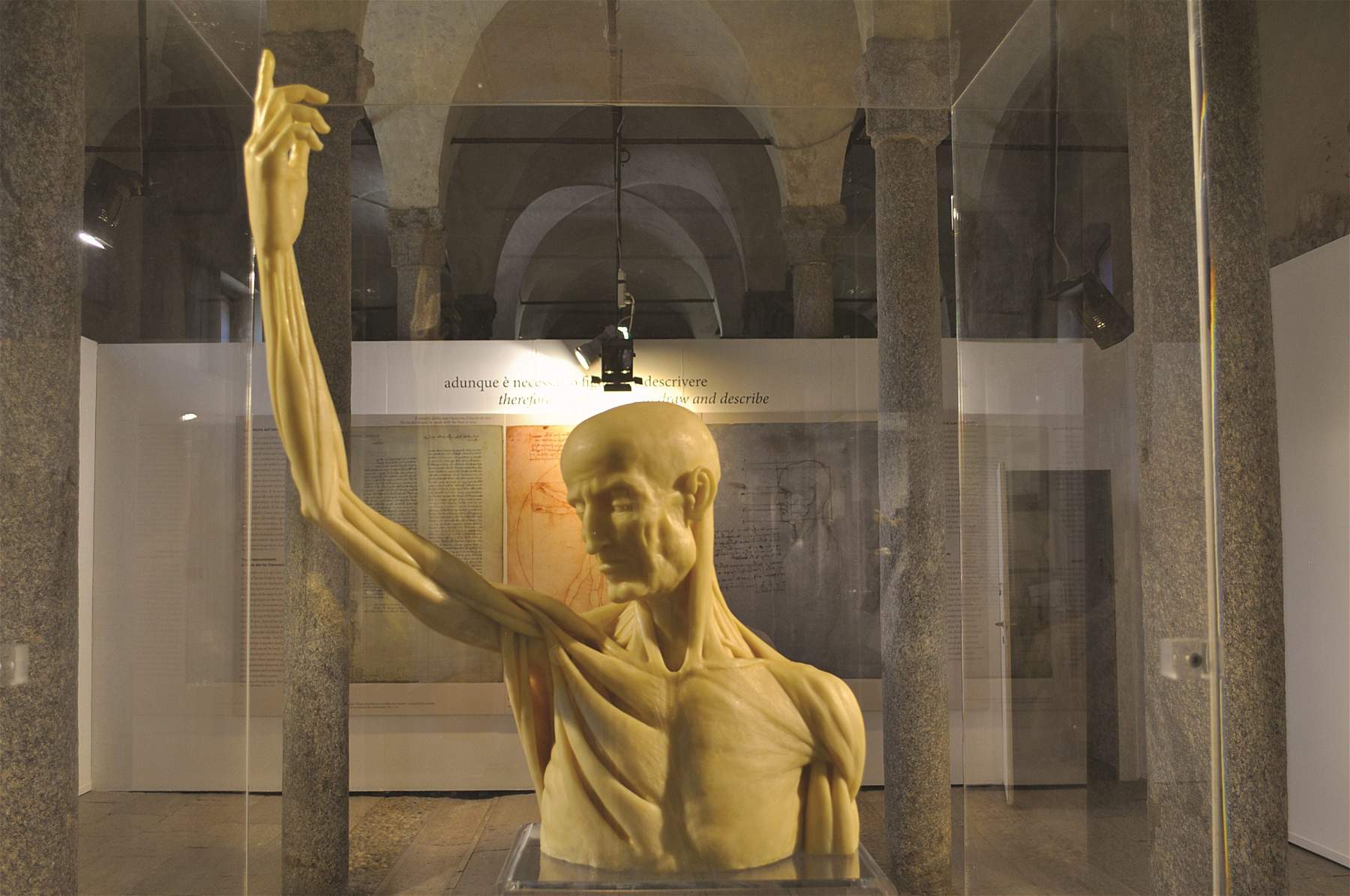The anatomical depiction methods of Guido da Vigevano (Pavia?, c. 1280 - Paris, c. 1349) and Leonardo da Vinci (Vinci, 1452 - Amboise, 1519) are compared at the Veneranda Biblioteca Ambrosiana in Milan from February 7 to March 29, 2020.
The exhibition Leonardo da Vinci and Guido da Vigevano. Anatomy in Figures, curated by Paola Salvi, made possible by the City of Vigevano, under the patronage of the Lombardy Region, theBrera Academy of Fine Arts in Milan, and theUniversity of Pavia, supported by the National Committee for the Celebration of the 500th Anniversary of the Death of Leonardo da Vinci and organized with theOverArt Association, closes the program of exhibitions proposed by the Veneranda Biblioteca Ambrosiana in Milan to enhance its heritage of works by Leonardo, among the most important in the world, and the artists of his circle.
The exhibition, set up in the Sala Sottofedericiana, presents reproductions of the 18 figures (in 16 plates) from the treatise Anothomia designata per figuras (1345) by Guido da Vigevano, alongside a series of reproductions of anatomical drawings by Leonardo da Vinci, made between about 1480 and 1517. From some of these drawings, which belong to Leonardo’s vast anatomical repertoire and are preserved in the collections of Queen Elizabeth II of England in Windsor Castle, five sculptures, conceived by Paola Salvi and made by Moreno Vezzoli, were made using the traditional technique of ceroplasty, to make people appreciate their anatomical precision and artistic beauty.
“There was a desire to focus on artistic beauty,” says Paola Salvi, “since Leonardo, in order to get to know the inside of the human body, practiced dissection, presumably with the assistance of a cerusician, as was customary at the time, but with the intention of surpassing it by bringing the knowledge acquired back to the life of the body in action.”
“His drawings,” Paola Salvi continues, “follow the anatomical fidelity of the living body, surpassing in graphic refinement any ’macabre’ aspect and testifying not only to the reality of anatomical representation, but also to the theories of his time, the very ones that Leonardo visualizes where experience does not allow him to verify and possibly refute them.”
The exhibition is completed, thanks to the collaboration of Carlo E. Rottenbacher, professor of the Department of Industrial and Information Engineering at the University of Pavia, with the scale reconstruction of Guido da Vigevano’s “wind chariot,” a wooden model derived from the design drawing contained in the Texaurus Regis Francie (1335), a manuscript that, for its time, presents remarkable mechanical and visualization solutions.
For all information you can visit the official website of the Veneranda Biblioteca Ambrosiana.
Pictured: Ceroplastica, bust with raised arm; conception Paola Salvi, realization Moreno Vezzoli
 |
| Milan, Biblioteca Ambrosiana compares Leonardo da Vinci and Guido da Vigevano and their anatomies in figures |
Warning: the translation into English of the original Italian article was created using automatic tools. We undertake to review all articles, but we do not guarantee the total absence of inaccuracies in the translation due to the program. You can find the original by clicking on the ITA button. If you find any mistake,please contact us.